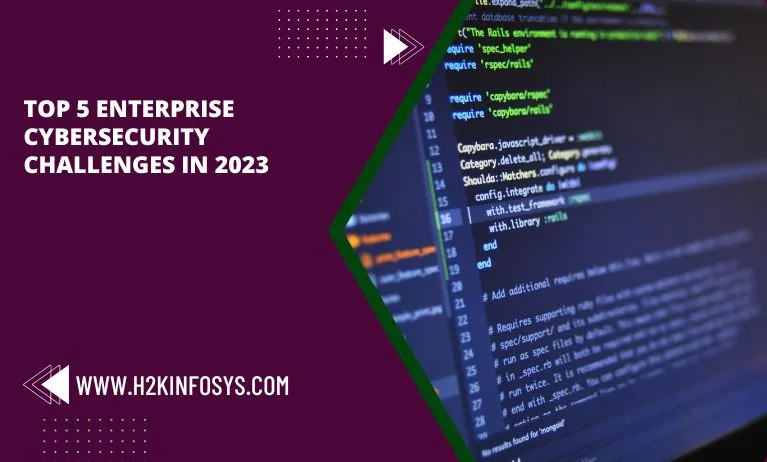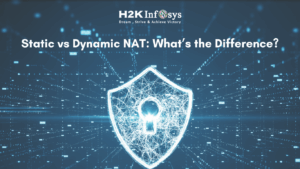When was the last year for security teams that was “easy”? No, not the previous year, not even this century, or even this decade. In recent years, there have been a number of notable and innovative cyberattacks.
It is simple to forecast that 2023 will be more of the same. If anything, the rate and scope at which threats and challenges multiply will only widen the threat environment and more swiftly than ever overwhelm existing business defenses. Cybercriminals won’t stop, and security teams’ efforts to safeguard networks, systems, apps, and data shouldn’t either.
However, there are other security issues to be mindful of in 2023 besides cyber dangers. The adoption of new technology creates vulnerabilities that must be addressed, and ongoing problems consistently rank among the “top challenges” each year.
Here are the top five trends and challenges that security teams and organizations need to be aware of in 2023. For the most recent trends, you can check out the online Cyber security certification course.
1.Ransomware.
2020 has been dubbed the “year of ransomware” due to a 148% increase in attacks during the COVID-19 outbreak. Next was 2021. Ransomware attacks were the most common type of cyber attack for the second year in a row, according to the IBM Security X-Force Threat Intelligence Index, making up 23% of attacks in 2020 and 21% of attacks in 2021. Even though there were fewer attacks in 2022, the threat persisted.
In 2023, ransomware will still be a problem, especially if double extortion attacks and ransomware as a service gain popularity.
2.IoT security.
IoT is meant to ease and improve the quality of people’s lives, both personally and professionally. However, because so many of these internet-connected devices aren’t made with security in mind, the attack surface is greatly increased.
IoT security vulnerabilities have always existed. In 2016’s Mirai botnet attacks, hardcoded passwords, a prevalent IoT security weakness, were exploited. After Mirai’s source code was made public, other variations emerged that are still being used today.
The best defense against such avoidable problems and subsequent assaults is legislation. Security standards for all IoT devices used by government organizations were established under the IoT Cybersecurity Improvement Act of 2020. The White House announced initiatives to defend consumer IoT devices from cyber threats in December 2022. In the spring of 2023, a national IoT cybersecurity labeling scheme is anticipated to become live.
There are IoT security laws in other nations as well. The Product Security and Telecommunications Infrastructure Act 2022, for instance, which was signed into law in the U.K. on December 6, 2022, will call for security measures on all Internet of Things devices, such as prohibiting the use of default passwords and requiring the manufacturer to maintain a vulnerability disclosure program.
3.AI for good and evil.
In 2023, it’s anticipated that consumer and business AI use will increase even more. This could be both good and bad for cybersecurity.
The good news is that security personnel may use AI for their routine tasks, such as assisting security operations center analysts, detecting and reducing risks, and managing and detecting fraud.
However, AI might significantly increase the workload for the security staff. Enterprise AI teams need to be aware of security and privacy issues.
Threat actors may also employ AI for bad purposes. Attackers can employ malware to assess the effectiveness of AI, corrupt AI models with erroneous data, and identify legitimate company AI use to enhance the effectiveness of their attacks. Deepfakes, an AI-enabled attack, is becoming a more realistic tool for social engineering attacks. In the near future, malware that uses AI to think for itself and is trained by machine learning may also arise.
4.Phishing.
Organizations of all sizes and shapes always struggle with phishing; neither a corporation nor a worker is safe from assault. A sort of phishing or social engineering was used in 25% of all breaches, according to the “2021 Verizon Data Breach Investigations Report.”
Email phishing, spear phishing, corporate email hacking, whaling, vishing, and image-based phishing are just a few of the many ways that hostile actors deceive employees into disclosing passwords, credit card numbers, and other sensitive information.
Here are a few notable Phishing incidents:
- Between 2013 and 2015, fraudsters pretended to be Facebook or Google partners, defrauding the companies of more than $100 million. The contracts and money-due invoices used in the phishing scams were real.
- After corporate leaders received phishing emails from a group called Guardians of Peace, Sony Pictures was attacked in 2014. More than 100 TB of data were apparently stolen by the attackers.
- As a result of a worker falling victim to phishing by an attacker posing as the business CEO and asking for a wire transfer to a bank account under the attackers’ control, the Austrian aviation supplier FACC was scammed of $54 million in 2016.
5.The skills gap and staffing issues.
The lack of skilled workers is nothing new for the security sector. Numerous studies have found that there is a greater need for security personnel than there are qualified candidates. Making problems worse, budget cuts and layoffs may result in fewer employees on a team that must nevertheless perform the same amount of work while having fewer staff members.
Although the cybersecurity workforce is the greatest the nonprofit has ever documented, a worldwide security gap has continued to widen year after year, according to the most recent “(ISC)2 Cybersecurity Workforce Study.” The workforce in cybersecurity is now estimated at 4.7 million, growing 11.1% from 2021, while an additional 3.4 million employees are required to adequately defend and secure today’s enterprises. However, finding workers with the required abilities and keeping them on board remains difficult. Even in the absence of probable budget cuts and job losses, such is the situation.
Conclusion
These challenges are going to be the main limitations to the spontaneous growth of cyber security in 2023, but it will not stop the fact that cyber security is going to be a major force in the global technological world. Check out the online Cyber security training to learn more about Cyber security.





























One Response